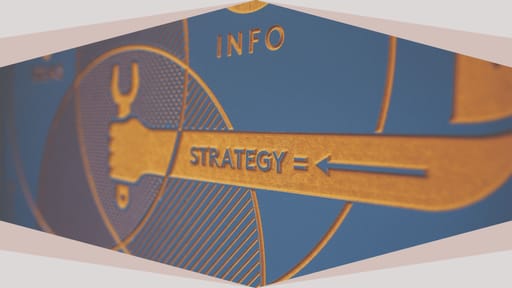Asynchronous Communication: What It Is and Why You Need It

by Nathan Allen

When the COVID-19 pandemic forced nearly the entire US corporate world to go remote in 2020, platforms like Zoom, Microsoft Teams, and Slack soared in popularity. Companies and managers often tried to recreate office procedures and protocols as much as possible for their new remote workforce toiling away in their makeshift home offices.
But replicating office-like group meetings in real time, known as synchronous communication, through various platforms like Zoom is not the most productive approach for remote teams, according to Snir David, a developer at Monday.com, which helps teams move—and remain—remote. “Synchronous communication is tiring, repetitive and takes away most of the remote work benefits (such as flexible hours, hiring from all over the world etc.),” he wrote in a recent blog post.
David isn’t alone. Buffer, a company specializing in social media management, swears by asynchronous communication. “Instead of relying on everyone being online at the same time, we try our best to communicate in a way that keeps conversations and decision-making open to all teammates, no matter where they are,” Buffer stated earlier this year on its website.
What exactly is asynchronous communication? The best (and simplest) definition we’ve found is communication that doesn’t expect an immediate response. Conversely, synchronous communication can be defined as real-time communication.
Whether you’re an employee or manager, asynchronous communication can help give you control over your workday. Instead of reacting to a constant influx of messages, you can prioritize actual work and also decide which messages deserve a higher-quality response. Since asynchronous communication happens through messaging, it creates documentation of communication, often handy down the road. And for teams operating across multiple time zones, asynchronous communication decreases the pressure to respond outside of standard work hours, which can boost mental health.
When to Use Synchronous and Asynchronous Communication
"There’s no shortage of software, apps, and tools to help teams hone their asynchronous communicating skills."

Your company has announced it’s implementing asynchronous communication. As a manager, it’s important for you to set clear parameters for your team about what needs to be synchronous. Looking for a quick answer on an urgent issue? Call via FaceTime or cell phone. Need to discuss an issue one-on-one with your supervisor? Use Microsoft Teams or Zoom. Want to have a virtual coffee or lunch with a coworker from the office? Zoom away. But if you have a question that requires some deep thinking or isn’t pressing—use email.
Asynchronous Communication Tips for Employees
If your manager has decided asynchronous communication is the way forward, how can you implement and hone these skills?
-
Communicate early and often. Essentially, over-communicate. The most efficient (and helpful for your coworkers) way to communicate asynchronously is to put sufficient detail in your initial message. Anticipate questions. Take screenshots or upload graphics if that helps explain your point. Spare. No. Details (that are relevant to this situation).
-
Read through your message from the perspective of your coworkers before sending the message. Don’t assume they know your thoughts or even have the faintest idea what you’re trying to communicate. Ask yourself what you know that they don’t. Also think about what they expect from you—and then try to provide it. And don’t just fire it off: Reread and edit for clarity. Grammarly is an excellent tool that can help with basic editing.
-
Plan ahead. Since you can’t expect immediate responses, build in some time for your co-communicators to respond thoroughly and thoughtfully. Try using Boomerang for Gmail to help with scheduled emails and automatic reminders.
-
When synchronous meetings, aka group meetings, do take place, create an agenda in the invite to keep the meeting focused. Or start a document with relevant information on key issues to share prior to the meeting so everyone’s up to speed. In this way, asynchronous communication can pair with synchronous communication to boost productivity.
-
Keep minutes or record meetings (audio or video) to post on a shared cloud. Coworkers not able to attend can review the meeting. These recordings are also useful as a reference for those who did attend.
Tools for Asynchronous Communication
There’s no shortage of software, apps, and tools to help teams hone their asynchronous communicating skills. Threads is a popular software that was moved out of stealth mode in February 2019. Small teams (10 or fewer members) and individuals can use the free version, which saves and documents videos and conversations. It conveniently integrates with platforms like Zoom and Slack. Organizations can pay $10 per month for Threads’ full offerings.
Another tool is Twist, which is trying to make office email obsolete by offering threads, channels, and messages. It’s essentially Slack but with more organization and searchable features.
Rocket.Chat is popular for its documentation and organization communication hub. It has a pared-down free version and a more deluxe premium version that costs $30 per user per year. Similar to Threads and Twist, it fully integrates with popular platforms you’re probably already using.
For project management, Asana might be the most helpful platform currently available. Its software-as-a-service (SaaS) model helps with team collaboration and work management. It has calendars, file attachments, reporting tools, and other features.
Just because your workforce has become distributed or remote doesn’t mean communication needs to devolve into mystifying information fragments that threaten efficient teamwork. As an employee or manager, try taking a few steps to improve your asynchronous communication skills; you will ultimately improve the functionality of your coworkers and team. Give some of our tips and tools a test drive and you’ll soon transition to a more asynchronous communication style.









